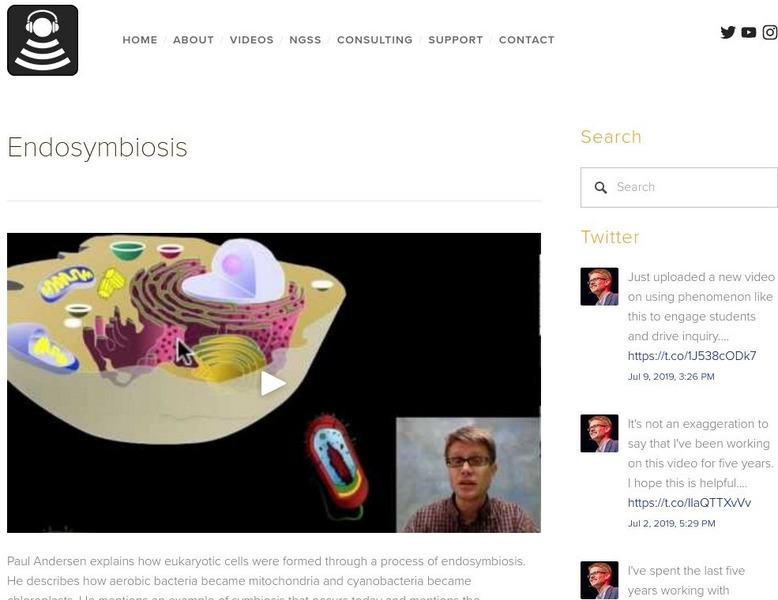PBS
How Our Deadliest Parasite Turned To The Dark Side
Around 10,000 years ago, somewhere in Africa, a microscopic parasite made a huge leap. With a little help from a mosquito, it left its animal host - probably a gorilla - and found its way to a new host: us.
PBS
Are We All Actually Archaea?
The unexpected discovery of an entirely new domain of life was pretty huge and surprising - even if archaea do just look like bacteria. But, in recent years, it’s been their connection to us that's turned out to be particularly full of...
SciShow
Meet Our Nitrogen-Breathing Bacterial Relative
Oxygen is pretty great stuff, but this recently discovered organism couldn’t care less about oxygen. It breathes nitrogen and may offer a window into how the types of cells in OUR bodies may have evolved billions of years ago.
SciShow
A Brief History of Life: Survival Is Hard
It turns out life may have gotten its start pretty early in Earth's history, and while the first couple billion years saw several important developments, the period was still dominated by very simple life forms. This is our first...
Bozeman Science
Mitochondria: The Powerhouse of the Cell
In this video Paul Andersen explains how the mitochondria generates energy for the cell through aerobic respiration. He also explains how research into the organelle has shown its importance in eukaryotic evolution.
Amoeba Sisters
Endosymbiotic Theory
Explore the endosymbiotic theory with the Amoeba Sisters! This theory explains the development of the eukaryote cell from prokaryote cell symbiosis. Scientific theories are also briefly defined. Table of Contents: Intro 00:00 What is a...
SciShow
Meet Our Nitrogen-Breathing Bacterial Relative
Oxygen is pretty great stuff, but this recently discovered organism couldn’t care less about oxygen. It breathes nitrogen and may offer a window into how the types of cells in OUR bodies may have evolved billions of years ago.
SciShow
A Brief History of Life on Earth: The Full Series
From the Archean Eon to the Holocene Epoch, check out this SciShow mini-series for a primer about life on earth.
Bozeman Science
Eukarya
Paul Andersen discusses the defining characteristics of the members of Domain Eukarya. He starts with a brief description of the phylogeny of life on earth. He then discusses the major characteristics of eukaryotic cells. He explains how...
Bozeman Science
Essential Characteristics of Life
Paul Andersen describes three main characteristics of life that are conserved in all organisms on the planet. The universal genetic code, the central dogma of biology, and shared metabolic pathways give us details of the original...
Bozeman Science
The Chloroplast
In this video Paul Andersen explains how the chloroplast in plants harnesses power from the Sun to form high energy molecules like glucose. The structure of a chloroplast as well as a brief discussion of the light reaction and Calvin...
Crash Course
The History of Life on Earth - Crash Course Ecology
With a solid understanding of biology on the small scale under our belts, it's time for the long view - for the next twelve weeks, we'll be learning how the living things that we've studied interact with and influence each other and...
Bozeman Science
Endosymbiosis
Paul Andersen explains how eukaryotic cells were formed through a process of endosymbiosis. He describes how aerobic bacteria became mitochondria and cyanobacteria became chloroplasts. He mentions an example of symbiosis that occurs...
Journey to the Microcosmos
The Complicated Legacy of Lynn Margulis
The world of microscopy is not without its own controversial figures, today we’re discussing Lynn Margulis and her contributions to the world of science as well as some of her more harmful beliefs.
Journey to the Microcosmos
The Terrifying Viruses of the Microcosmos
Even in the microcosmos, it's important to stay inside if you want to avoid a virus.
Professor Dave Explains
The Origin of Multicellular Life: Cell Specialization and Animal Development
Alright, so we've learned a lot about the origin of life. We learned about how the first organic molecules can have formed spontaneously, and how they might have assembled into the first protocell. From there, endosymbiotic theory tells...
Professor Dave Explains
Endosymbiosis, Choanoflagellates, and the Origin of Animal Life
When we discuss zoology, we are always also talking about evolutionary biology. And with evolution, we are sometimes concerned with origins. What is the origin of animals? What is the origin of eukaryotes? What is the origin of life on...
Bozeman Science
Bozeman Science: Endosymbiosis
Paul Andersen explains how eukaryotic cells were formed through a process of endosymbiosis. He describes how aerobic bacteria became mitochondria and cyanobacteria became chloroplasts. He mentions an example of symbiosis that occurs...

